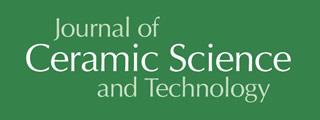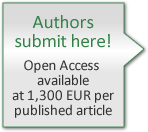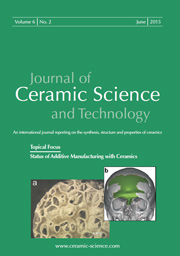Articles
All articles | Recent articles
Mechanical and Biological Properties of Biphasic Calcium Phosphate Scaffold depending on Different Nanoparticle Fabrication Methods
M.-H. Hong1, S.-M. Kim2, Y.-K. Lee3
1 Department of Neurosurgery, Spine and Spinal Cord Institute, Yonsei University College of Medicine, Seoul 03722, South Korea
2 Department and Research Institute of Dental Biomaterials and Bioengineering, Yonsei University College of Dentistry, Seoul 03722, South Korea
3 Research Center for Oral Disease Regulation of the Aged, Chosun University College of Dentistry and Graduate School of Dentistry, Gwangju 61452, South Korea
received May 19, 2017, received in revised form August 30, 2017, accepted November 6, 2017
Vol. 8, No. 4, Pages 541-546 DOI: 10.4416/JCST2017-00033
Abstract
Biphasic calcium phosphate (BCP) is widely used as biomaterial for bone regeneration because of its favourable bioactivity and bioresorption property when compared to hydroxyapatite and β-tricalcium phosphate on their own. Two types of BCP are available in orthopedics and dentistry: chemically synthesized BCP (C-BCP) and mechanically mixed BCP (M-BCP). In this study, the mechanical and biological properties of these two types of BCP scaffold were compared. The scaffolds were characterized based on an evaluation of their surface morphology by means of SEM, and their compressive strength was determined in a universal testing machine. The cell proliferation and osteogenic differentiation were measured in a cell-counting assay and alkaline phosphatase activity test. Compared to the M-BCP scaffold, the C-BCP scaffold showed enhanced compressive strength owing to the dense surface of struts. However, the C-BCP and M-BCP scaffolds were shown to be similar with regard to biological properties. This study concluded that the method applied to fabricate BCP nanoparticles influenced their size, the smaller size particles resulting in good mechanical properties thanks to their dense surface. However, the particle size did not influence the biological properties of the BCP scaffolds.
![]() Download Full Article (PDF)
Download Full Article (PDF)
Keywords
Calcium phosphates, scaffolds, mechanical property, biological property
References
1 Kwon, S.H., Jun, Y.K., Hong, S.H., Kim, H.E.: Synthesis and dissolution behavior of beta-TCP and HA/beta-TCP composite powders, J. Eur. Ceram. Soc., 23, 1039 – 1045 (2003).
2 Kim, T.W. et al.: In situ formation of biphasic calcium phosphates and their biological performance in vivo, Ceram. Int., 38, 1965 – 1974, (2012).
3 Ramay, H.R.R., Zhang, M.: Biphasic calcium phosphate nanocomposite porous scaffolds for load-bearing bone tissue engineering, Biomaterials, 25, 5171 – 5180, (2004).
4 Ryu, H.S. et al.: An improvement in sintering property of beta-tricalcium phosphate by addition of calcium pyrophosphate, Biomaterials, 23, 909 – 914, (2002).
5 Guler, H., Gundogmaz, G., Kurtulus, F., Celik, G., Gacanoglu, S.S.: Solid state synthesis of calcium borohydroxyapatite, Solid State Sci., 13, 1916 – 1920, (2011).
6 Leng, Y., Chen, J.Y., Qu, S.X.: TEM study of calcium phosphate precipitation on HA/TCP ceramics, Biomaterials, 24, 2125 – 2131, (2003).
7 Aimoli, C.G., Beppu, M.M.: Precipitation of calcium phosphate and calcium carbonate induced over chitosan membranes: A quick method to evaluate the influence of polymeric matrices in heterogeneous calcification, Colloid Surface B, 53, 15 – 22, (2006).
8 Chen, J.D. et al.: A simple sol-gel technique for synthesis of nanostructured hydroxyapatite, tricalcium phosphate and biphasic powders, Mater. Lett., 65, 1923 – 1926, (2011).
9 Fellah, B.H., Layrolle, P.: Sol-gel synthesis and characterization of macroporous calcium phosphate bioceramics containing microporosity, Acta Biomater., 5, 735 – 742, (2009).
10 Zhou, H., Lee, J.: Nanoscale hydroxyapatite particles for bone tissue engineering, Acta Biomater., 7, 2769 – 2781, (2011).
11 Pathi, S.P., Lin, D.D.W., Dorvee, J.R., Estroff, L.A., Fischbach, C.: Hydroxyapatite nanoparticle-containing scaffolds for the study of breast cancer bone metastasis, Biomaterials, 32, 5112 – 5122, (2011).
12 Zhang, S., Gonsalves, K.E.: Preparation and characterization of thermally stable nanohydroxyapatite, J. Mater. Sci.-Mater. M, 8, 25 – 28, (1997).
13 Kim, S.M., Yi, S.A., Choi, S.H., Kim, K.M., Lee, Y.K.: Gelatin-layered and multi-sized porous beta-tricalcium phosphate for tissue engineering scaffold, Nanoscale Res. Lett., 7, 1 – 5, (2012).
14 Hong, M.H., Kim, S.M., Om, J.Y., Kwon, N., Lee, Y.K.: Seeding cells on calcium phosphate scaffolds using hydrogel enhanced osteoblast proliferation and differentiation, Ann. Biomed. Eng., 42, 1424 – 1435, (2014).
15 Nath, A.K., Jiten, C., Singh, K.C.: Influence of ball milling parameters on the particle size of barium titanate nanocrystalline powders, Physica B, 405, 430 – 434, (2010).
16 Lin, K.L., Chen, L., Qu, H.Y., Lu, J.X., Chang, J.: Improvement of mechanical properties of macroporous beta-tricalcium phosphate bioceramic scaffolds with uniform and interconnected pore structures, Ceram. Int., 37, 2397 – 2403, (2011).
17 Kasten, P. et al.: Porosity and pore size of beta-tricalcium phosphate scaffold can influence protein production and osteogenic differentiation of human mesenchymal stem cells: An in vitro and in vivo study, Acta Biomater., 4, 1904 – 1915, (2008).
18 Byrne, D.P., Lacroix, D., Planell, J.A., Kelly, D.J., Prendergast, P.J.: Simulation of tissue differentiation in a scaffold as a function of porosity, Young's modulus and dissolution rate: Application of mechanobiological models in tissue engineering. Biomaterials, 28, 5544 – 5554, (2007).
Copyright
Göller Verlag GmbH


